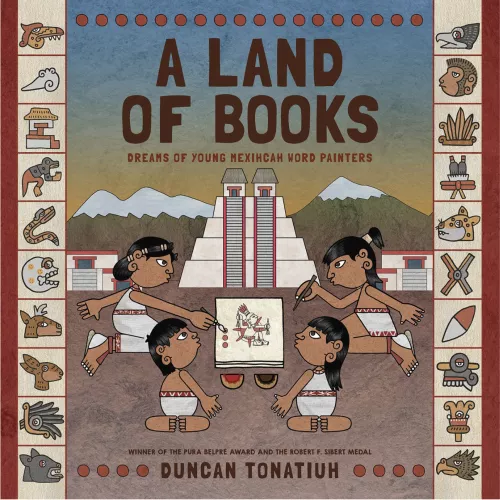Share this book
As Duncan Tonatiuh explains in his author’s note, Mesoamerican codices only include drawings–pictograms–not written words. Talk with students about ways they think they could share ideas and information with only images. A Land of Books helps more people know about the great history of the rich and vibrant bookmaking tradition in Mesoamerica before the arrival of the Spanish and other Europeans. Ask students to think about how they could convey some of their own family or community history using pictograms. Have them make notes about what they would want to share before they start work on their own codices.
To make their codices, have students:
- Fold 2 sheets of 8 ½ x 11 paper in half lengthwise. Cut along the fold to make 4 strips of paper.
- Tape or glue the strips of paper together to make one long piece of paper.
- Accordion-fold the long piece into 8 equal panels.
- Create a front and back cover by cutting pieces of cardboard or cardstock to size to fit on the top and bottom panels. Glue in place.
- Unfold the pages. Add pictograms that tell family or community stories.
- Decorate the covers.
Pair students and have them exchange their work to see if they can interpret each other’s stories. Then have each creator explain their work to their partner or to all of their classmates.
Questions for Discussion or Reflective Writing
- Why is it important to preserve culture and history? What examples of culture, history, and storytelling in your own life can you think of?
- What aspects of your culture are most important to you? What aspects do you connect with the most?
- Consider your own culture or that of someone you know. What symbols, activities, and beliefs represent that culture?
- Think of traditions in your family. Describe one in particular that you would want to continue in the future. Why is it important to uphold traditions?
Related Resources
Codices in the World Digital Library
Codex Borgia from Khan Academy
Duncan Tonatiuh: From Comics to Codex from Mackin
More Titles to Try
Stay on top of current education news



